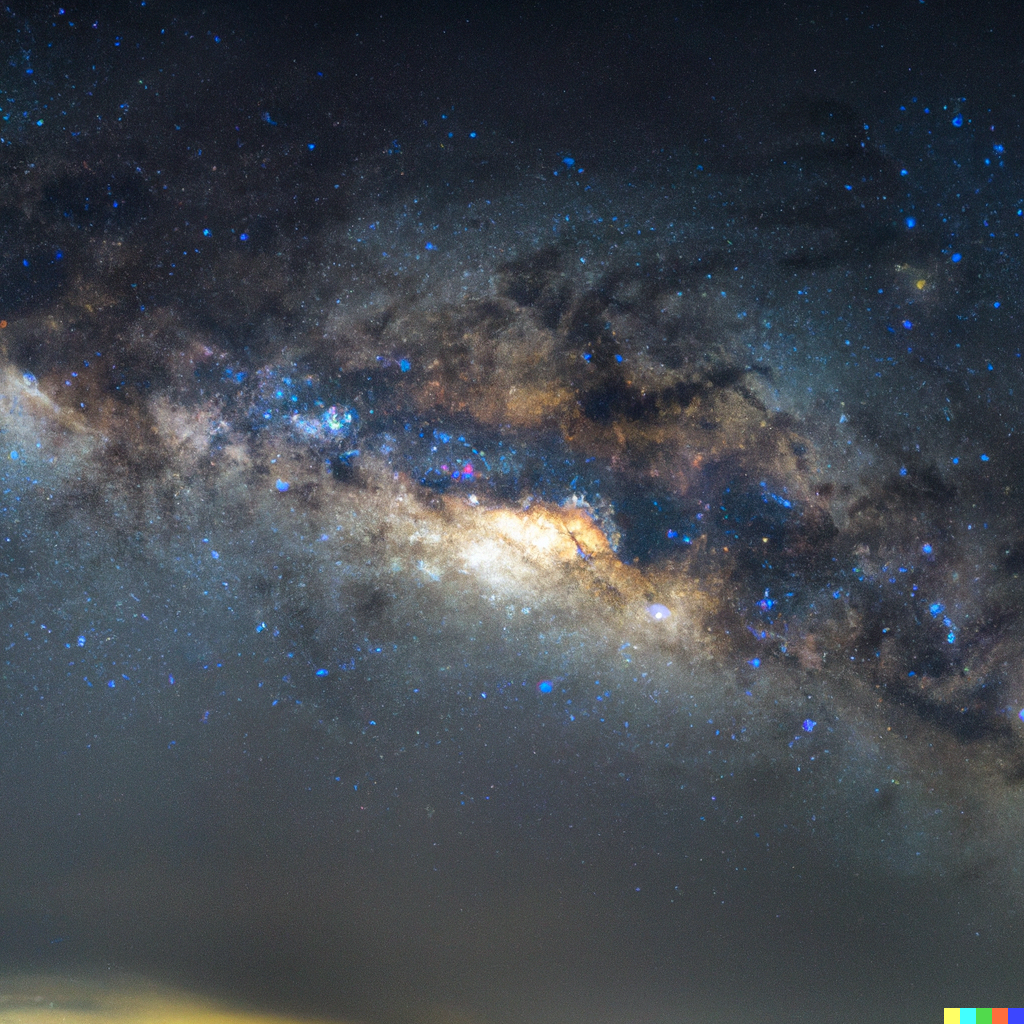
The Milky Way, our home galaxy, is home to a supermassive black hole at its center. This black hole, known as Sagittarius A*, has a mass of around 4 million times that of the Sun. In this blog post, we will explore what black holes are, how they form, and how we know that Sagittarius A* exists.
What are Black Holes?
Black holes are some of the most mysterious and fascinating objects in the universe. They are formed when a massive star collapses at the end of its life, creating a region of space with such a strong gravitational pull that nothing, not even light, can escape from it. This is why black holes are often referred to as “point masses” – they have such a strong gravitational field that they can be represented by a single point in space.
Black holes come in a range of sizes, from small ones with masses similar to that of our Sun to supermassive ones like Sagittarius A*, which can have masses billions of times that of the Sun. The smaller black holes are called “stellar” black holes and are formed when a star with a mass between 5 and 20 times that of the Sun collapses. The larger black holes, called “supermassive” black holes, are found at the center of most galaxies, including the Milky Way.
How Do Black Holes Form?
Black holes are formed when a star collapses at the end of its life. This can happen when a star runs out of fuel and can no longer produce energy through nuclear fusion. Without the outward pressure created by fusion, the star’s own gravity causes it to collapse in on itself.
The process of a star collapsing to form a black hole is called “gravitational collapse.” As the star collapses, its gravity becomes stronger and stronger, causing it to shrink in size. Eventually, the star becomes so small and dense that it forms a singularity – a point in space where the density becomes infinite and the laws of physics break down. This singularity is surrounded by an event horizon, which is the point of no return for anything that enters it.
How Do We Know Sagittarius A* Exists?
The existence of Sagittarius A* was first proposed in the 1970s based on observations of stars orbiting around the center of the Milky Way. These observations showed that something with a very large mass – much larger than any star – was located at the center of the galaxy, pulling on the stars and causing them to orbit around it.
Since then, there have been many more observations and studies that have confirmed the existence of Sagittarius A*. These include observations of gas and dust swirling around the black hole, as well as measurements of the velocities of stars and gas clouds in the region.
One of the most convincing pieces of evidence for the existence of Sagittarius A* came in 2018, when the Event Horizon Telescope collaboration released the first-ever image of a black hole. This image, which was created by combining data from eight telescopes around the world, showed a bright ring of light surrounding a dark region – the event horizon of the black hole.
What Do We Know About Sagittarius A*?
Sagittarius A* is located at the center of the Milky Way, about 26,000 light-years from Earth. It has a mass of around 4 million times that of the Sun and is surrounded by an event horizon with a radius of around 44 million kilometers.
Sagittarius A* is relatively quiet compared to other black holes, and it is thought to be in a “dormant” state. However, it is not completely inactive – it does occasionally produce bursts of high-energy radiation, which are thought to be caused by matter falling into the black hole. These bursts are called “flares,” and they are caused by the acceleration of particles as they fall into the black hole’s gravitational field.
One of the most interesting things about Sagittarius A* is that it is located at the center of the Milky Way’s supermassive black hole. This means that it is the “heart” of our galaxy, and it plays a crucial role in the evolution and structure of the Milky Way.
What Happens to Matter That Falls into a Black Hole?
When matter falls into a black hole, it is pulled into the singularity at the center. The matter is then compressed and crushed to an infinite density, where the laws of physics break down.
It is thought that black holes can potentially be “gateways” to other dimensions or universes, as the singularity at the center represents a point where the normal laws of physics do not apply. However, this is purely theoretical and has not yet been proven.
Conclusion
The Milky Way’s black hole, Sagittarius A*, is a fascinating and mysterious object that continues to be studied by scientists around the world. While we have learned a lot about black holes and Sagittarius A* over the years, there is still much that we don’t know. Further research and observations will help us to better understand these enigmatic objects and their role in the universe.
